Syn.: Batatas acetosifolia (Vahl) Choisy, Batatas littoralis (L.) Choisy, Convolvulus acetosifolius Vahl, Convolvulus imperati Vahl, Convolvulus littoralis L., Convolvulus sinuatus Petagna, Convolvulus stolonifer Cirillo, Ipomoea acetosifolia (Vahl) Roem. et Schult., Ipomoea carnosa R. Br., Ipomoea stolonifera (Cirillo) J. F. Gmel.
Family: Convolvulaceae Juss.
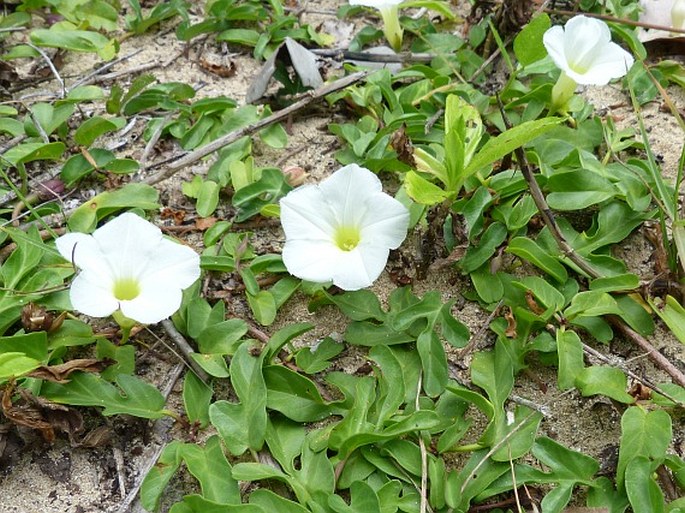
Distribution: Pantropical and warm temperate littoral species – southeastern part of US, Caribbean, Central America, northern part of South America, Pacific Islands, southern China, Taiwan, Indonesia, southern Japan, Malaysia, Philippines, Thailand, Vietnam, Sri Lanka, northern Africa, southern Europe (Crete, Italy) and Azores Islands.
Found in US from North Carolina south along the coast to Texas; rather rare in northern parts, considered noxious in Texas and Louisiana.
Ecology: Grows on coastal flats, beaches, windward and leeward slopes of dunes, up to 100 m asl. Blooms from May to August.
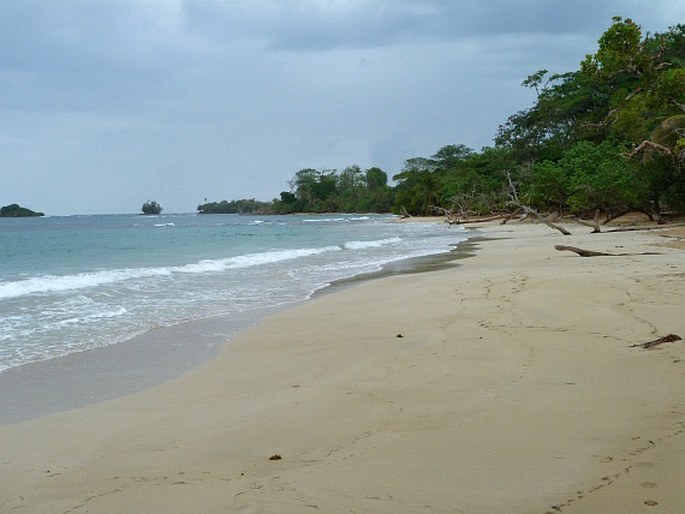
Description: Perennial creeping vine, from rhizomes. Stems prostrate, ascending to about 15 cm, rooting at the nodes, reaching up to 30 m from the original root. Leaves are alternate, petiolate, leaf blade variable, often linear, lanceolate to cordate or 3–5-lobed, 10–15 cm long, 5–7 cm wide, glaucous green, densely arranged. Flowers are white with yellowish centre, 5–7 cm across, funnel-shaped, with flat spreading petals, each with a longitudinal crease. Flowers open early in the morning and close at dusk. Fruit is a rounded capsule.
Use: This species was commonly used to treat inflammation, swelling and sores, and for treating postpartum pain and stomach pain.
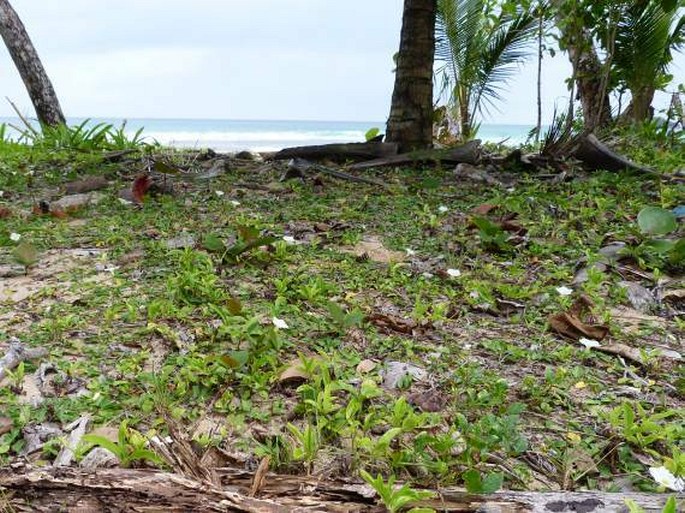
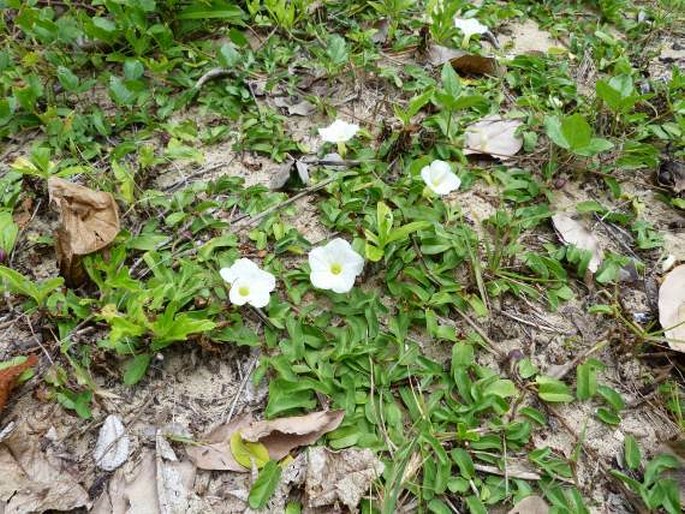
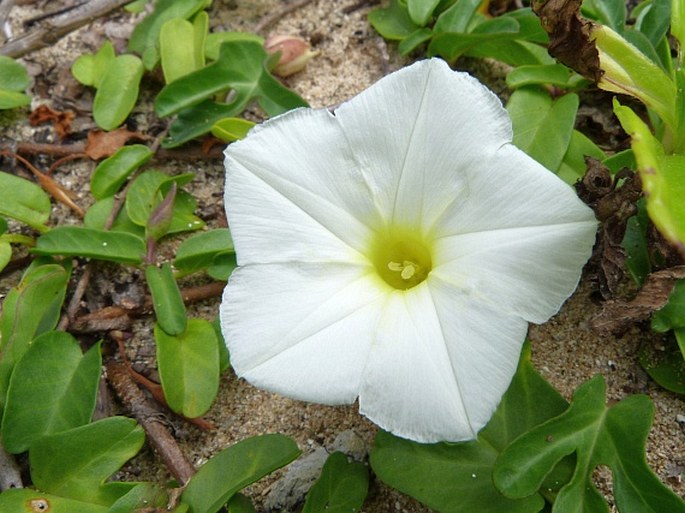
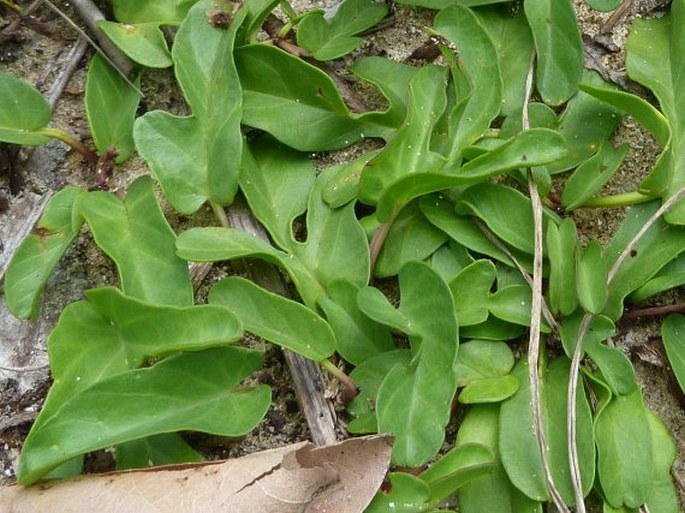
These images were taken in Panama, Isla Bastimentos (by Jindřiška Vančurová, March 9, 2014).


